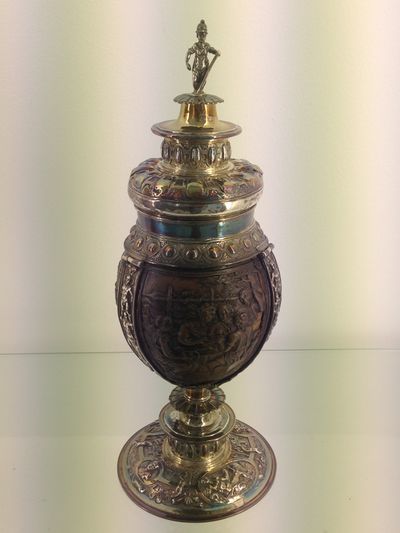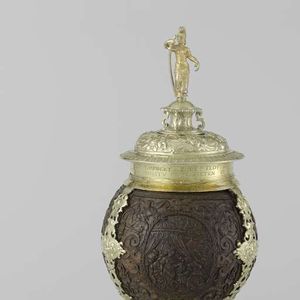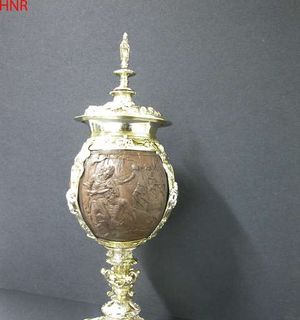Difference between revisions of "Practice & Research"
Shinysheep (talk | contribs) |
Shinysheep (talk | contribs) |
||
| Line 3: | Line 3: | ||
<center> | <center> | ||
| − | While I was in the Boijmans Museum for choosing 8 different objects to show Jon in the introduction week on the first day, I photographed | + | While I was in the Boijmans Museum for choosing 8 different objects to show Jon in the introduction week on the first day, I photographed this item which I really liked. I thought that this object was very interesting to know more about. |
When I saw it the first time, i had actually no idea what this could be. Maybe a sort of box? I could not read the drawings on this object very well. I could see that there were drawings, but not what they are about. Also the silverwork around the object was very shiny and detailed. | When I saw it the first time, i had actually no idea what this could be. Maybe a sort of box? I could not read the drawings on this object very well. I could see that there were drawings, but not what they are about. Also the silverwork around the object was very shiny and detailed. | ||
| Line 18: | Line 18: | ||
I wanted to know some more about the details of the object. On all coconut cups we can see carved images in the coconut wood. I found out that there's a story on the cup from the Boijmans museum. It's the biblical story about the 'Verloren Zoon'/'Lost Brother'/'Lost Sheep'. There are actually three images on this cup around; The departure, the stay and the return. This is a story from 'Lucas 15: 11-32'. | I wanted to know some more about the details of the object. On all coconut cups we can see carved images in the coconut wood. I found out that there's a story on the cup from the Boijmans museum. It's the biblical story about the 'Verloren Zoon'/'Lost Brother'/'Lost Sheep'. There are actually three images on this cup around; The departure, the stay and the return. This is a story from 'Lucas 15: 11-32'. | ||
| − | a | + | I know that coconut is a very exotic product, which was often imported from Africa, Central America and Asia in the 16th century. What i find so strange about this is that they made such common stories on these rare materials which were hard to get. |
Revision as of 19:09, 21 September 2015
The Object
While I was in the Boijmans Museum for choosing 8 different objects to show Jon in the introduction week on the first day, I photographed this item which I really liked. I thought that this object was very interesting to know more about. When I saw it the first time, i had actually no idea what this could be. Maybe a sort of box? I could not read the drawings on this object very well. I could see that there were drawings, but not what they are about. Also the silverwork around the object was very shiny and detailed.
When I talked about this object with Jon he told me that this object was made out of coconut wood. I decided to do some research and this is what I found. This objects is called a 'kokosnootbeker'; a coconutcup, made by an unknown artist around 1550-1600. Apparently these coconutcups were often made around the 16th century. I found out that the Rijksmuseum has some of these cups too.
I wanted to know some more about the details of the object. On all coconut cups we can see carved images in the coconut wood. I found out that there's a story on the cup from the Boijmans museum. It's the biblical story about the 'Verloren Zoon'/'Lost Brother'/'Lost Sheep'. There are actually three images on this cup around; The departure, the stay and the return. This is a story from 'Lucas 15: 11-32'.
I know that coconut is a very exotic product, which was often imported from Africa, Central America and Asia in the 16th century. What i find so strange about this is that they made such common stories on these rare materials which were hard to get.


